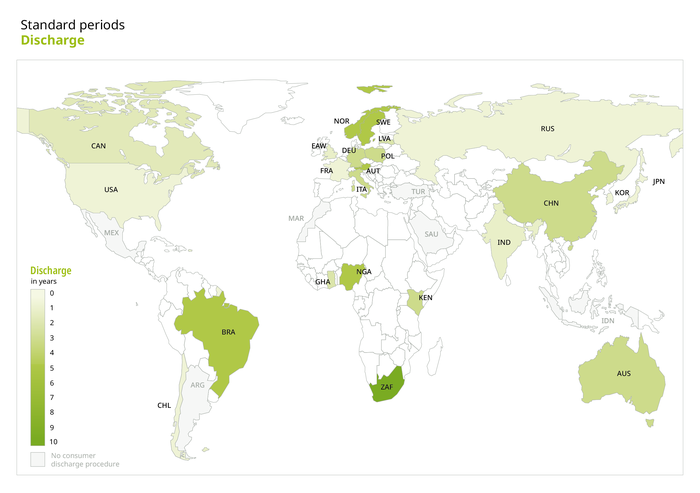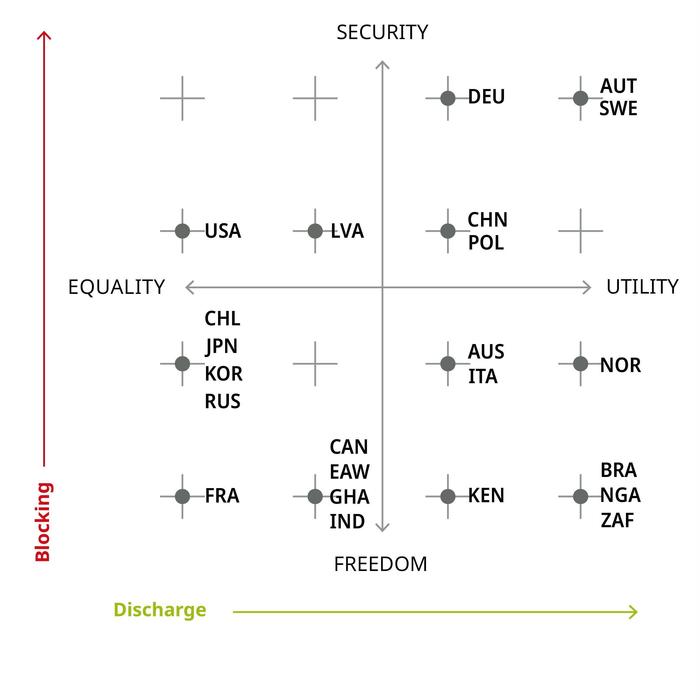Consumer Insolvency Regimes
Project Stream 2 · Esra Celebi
The comparative analysis within the field of consumer insolvency centers on the temporal scale of discharge procedures. As insolvent debtors cannot fully pay claims, alternate considerations become crucial for receiving a discharge. These involve liquidation, partial payments and behavioral obligations that legal orders specify differently – all within a certain temporal frame that sets the procedural stage.
The sampled countries’ temporal spectra reveal how different rationalities manifest and how law resolves conflicts. These balancing decisions reflect the plural values underpinning varying political notions of debt relief in law. More tangibly, the focus is on three temporal components of consumer discharge procedures and their extent: discharge, revocation, and blocking periods and their interplay.
Discharge Periods
To compare discharge periods around the world, this analysis explores the time until discharge, among other temporal factors, across 23 jurisdictions that have implemented discharge procedures for consumers. The visualization of these illustrates differences and similarities across jurisdictions, as shown in the examples.
Project Funding

Funded by the European Union (ERC, RESOLVENCY, No. 950427). Views and opinions expressed are, however, those of the author(s) only and do not necessarily reflect those of the European Union or the European Research Council Executive Agency. Neither the European Union nor the granting authority can be held responsible for them.



